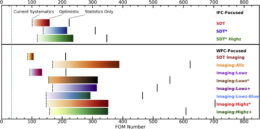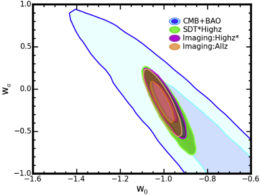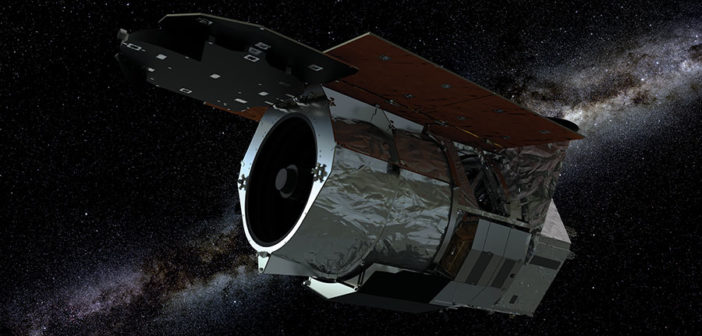New exoplanets, distant galaxies, unexpected transients — the successful discoveries of major astronomical missions get splashed across news headlines. What generally isn’t seen, however, is the often decades-long development process that led to these successful missions — a process that includes not only technology and engineering feats, but also the meticulous planning necessary to optimize the use of an observatory with a limited lifetime.
Want a closer look? A recently published study provides an insider’s view of these complex planning stages for a proposed upcoming mission, the Wide Field Infrared Survey Telescope (WFIRST).
A New Eye in the Sky

Schematic of the expansion of the universe. WFIRST would use supernovae to learn more about the nature of dark energy. [NASA/WMAP]
WFIRST will use a telescope the size of Hubble’s (i.e., a 2.37-m mirror) that was donated in 2012 by the National Reconnaissance Office. It will host two main instruments: a coronagraph that will be used for exoplanet and planetary disk studies, and a wide-field instrument that will be used to probe dark-energy models. The wide-field instrument will have two components: a wide-field channel imager, and an integral field channel spectrometer.
Vying for Time
Looking at just the dark-energy science objective, we can already see timing challenges emerge. WFIRST seeks to constrain the nature of dark energy by discovering and measuring the distance to Type Ia supernovae, thereby measuring the evolution of dark energy over time.

Comparison of the predicted range of values for the figure of merit (FoM) number — a metric that characterizes how well we understand the dark-energy equation of state — for different survey strategies. Spectrometer-focused strategies are shown in the top panel, and imager-focused strategies are shown in the bottom panel. The red dashed line indicates our current level of understanding. [Hounsell et al. 2018]
These are just some of the many questions survey designers must wrestle with in order to optimize the WFIRST mission and give the project the best chance of answering our questions. To aid decision-making, a team of scientists led by Rebekah Hounsell (University of California, Santa Cruz and University of Illinois at Urbana-Champaign) has now conducted a series of simulations to explore different supernova survey strategies for WFIRST.
An Optimized Reference

Example confidence contours for our knowledge of two parameters that describe the dark-energy equation of state and its evolution over time, for some of the survey strategies the authors propose. All the survey strategies provide significant improvement over our understanding from just cosmic-microwave-background and baryon-acoustic-oscillation constraints (shown in blue for comparison). [Adapted from Hounsell et al. 2018]
Though we won’t know exactly which strategy is the most optimal until we’ve determined some of the specific systematic uncertainties of the mission, Hounsell and collaborators’ study has laid the groundwork for future planning of the mission. What’s more, their results confirm that WFIRST will have the potential to significantly advance our understanding of dark energy — so keep an eye on this project in the future!
Citation
“Simulations of the WFIRST Supernova Survey and Forecasts of Cosmological Constraints,” R. Hounsell et al 2018 ApJ 867 23. doi:10.3847/1538-4357/aac08b


2 Comments
Pingback: AAS Nova – New
Pingback: November 24 – November 30, 2018 | Colorado Space News